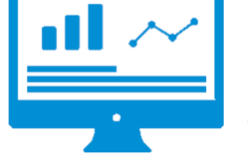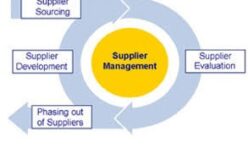|
ISO 9001 Auditing Practices Group Guidance on: Monitoring and measuring resources |
Nhóm Thực hành đánh giá ISO 9001: Hướng dẫn cho: Năng lực |
| The following information is provided as guidance for auditing control of monitoring and measuring resources, and to assist in the evaluation of justifications for the nonapplication of clause 7.1.5 from the scope of an organization’s quality management system.
Guidance on “Measurement traceability” is provided in another ISO 9001 Auditing Practices Group paper. |
Thông tin sau đây cung cấp hướng dẫn cho việc đánh giá kiểm soát nguồn lực theo dõi và đo lường và để hỗ trợ việc đánh giá các lý do cho việc không áp dụng điều 7.1.5 trong phạm vi hệ thống quản lý chất lượng của tổ chức.
Hướng dẫn về “Liên kết chuẩn đo lường” được cung cấp trong một bài báo khác của Nhóm Thực hành Đánh giá ISO 9001. |
| 1. Monitoring and measurement equipment
When auditing monitoring and measuring equipment, it is important for auditors to understand that the equipment supports monitoring and measurement methods that the organization has determined to be needed to ensure valid results. It is also important to know the difference between “monitoring” and “measuring”:
|
1. Thiết bị theo dõi và đo lường
Khi đánh giá thiết bị theo dõi và đo lường, điều quan trọng là đánh giá viên phải hiểu rằng thiết bị hỗ trợ các phương pháp theo dõi và đo lường mà tổ chức đã xác định là cần thiết để đảm bảo kết quả đúng. Điều quan trọng nữa là phải biết sự khác biệt giữa “theo dõi” và “đo lường”:
|
| “Measuring equipment” is defined in ISO 9000 as “measuring instrument, software, measurement standard, reference material or auxiliary apparatus or combination thereof necessary to realize a measurement process”.
Depending on the specific circumstances, measuring or monitoring equipment can be used either for indication, monitoring or measuring purposes. In some cases the same type of equipment could be used for all these three functions, for example, a pressure gauge may be used: |
“Thiết bị đo lường” được định nghĩa trong ISO 9000 là “Phương tiện đo, phần mềm, chuẩn đo lường, mẫu chuẩn hoặc các thiết bị phụ hay tổ hợp các yếu tố trên, cần thiết để thực hiện quá trình đo”.
Tùy thuộc vào các trường hợp cụ thể, thiết bị đo lường hoặc theo dõi có thể được sử dụng cho mục đích chỉ thị, theo dõi hoặc đo lường. Trong một số trường hợp, cùng một loại thiết bị có thể được sử dụng cho cả ba chức năng này, ví dụ, đồng hồ đo áp suất có thể sử dụng: |
|
|
| The level of control depends on the intended use and determines whether or not measuring equipment needs to be calibrated or verified. The depth and degree of such control may vary, depending on the nature of processes, their outputs, products, services and related risks.
In cases where the organization makes use of measuring equipment, evidence should be obtained that the metrological needs related to the production or service provision have been properly identified/specified and that the selected equipment “are suitable for the specific type of monitoring and measurement activities being undertaken”. In the extent needed, auditors should confirm that, in addition to providing the necessary calibration records and assuring the related measurement uncertainty and traceability, the organization is aware of and has implemented, as appropriate, a metrological confirmation system as described in ISO 10012 adequate to the extent and types of the measurements performed. |
Mức độ kiểm soát phụ thuộc vào mục đích sử dụng và xác định xem liệu thiết bị đo có cần thiết phải hiệu chuẩn hoặc kiểm tra xác nhận hay không. Trình độ và mức độ của việc kiểm soát đó có thể khác nhau, tùy thuộc vào bản chất của các quá trình, đầu ra, sản phẩm, dịch vụ và các rủi ro liên quan.
Trong trường hợp tổ chức sử dụng thiết bị đo lường, cần thu thập được bằng chứng rằng các nhu cầu đo lường liên quan đến sản xuất hoặc cung cấp dịch vụ đã được xác định/cụ thể một cách thích hợp và thiết bị được lựa chọn “phù hợp với loại hoạt động theo dõi và đo lường cụ thể được thực hiện”. Trong phạm vi cần thiết, đánh giá viên phải xác nhận rằng, ngoài việc cung cấp các hồ sơ hiệu chuẩn cần thiết và đảm bảo việc liên kết chuẩn đo lường và độ không đảm bảo đo liên quan, tổ chức đã nhận thức được và đã áp dụng, nếu thích hợp, hệ thống xác nhận đo lường như được mô tả trong ISO 10012 thích hợp để mức độ và các loại phép đo được thực hiện. |
| 2. Monitoring and measurement resources
Some organizations, mainly in the service sector (e.g. hotels, restaurants, education centers, consultants, public services), perform monitoring and measuring activities using surveys, examination papers, questionnaires, statistical methods, etc., due to the nature of their product. The applicability and validity of these methods has to be determined. These types of monitoring and measurement resources should be controlled accordingly to ensure that they provide consistent means of monitoring and measurement of the processes, products and services, and customer satisfaction and ensure valid results. If an organization can demonstrate appropriate controls of such resources an auditor needs to realize that not all the requirements may be applicable for such resources. |
2. Nguồn lực theo dõi và đo lường
Ở một vài tổ chức, chủ yếu trong lĩnh vực dịch vụ (ví dụ: khách sạn, nhà hàng, trung tâm giáo dục, tư vấn, dịch vụ công), thực hiện các hoạt động theo dõi và đo lường bằng cách sử dụng khảo sát, giấy kiểm tra, bảng câu hỏi, phương pháp thống kê, v.v., do tính chất của sản phẩm của họ. Khả năng áp dụng và hiệu lực của các phương pháp này phải được xác định. Các loại nguồn lực theo dõi và đo lường này cần được kiểm soát phù hợp để đảm bảo rằng chúng cung cấp các phương tiện theo dõi và đo lường nhất quán đối với các quá trình, sản phẩm và dịch vụ, sự hài lòng của khách hàng và đảm bảo kết quả đúng. Nếu một tổ chức có thể chứng minh các biện pháp kiểm soát thích hợp đối với các nguồn lực đó, đánh giá viên cần nhận ra rằng không phải tất cả các yêu cầu đều có thể áp dụng cho các nguồn lực đó. |
| 3. Applicability of standard requirements
The organization needs to understand the impact of the information obtained from using these resources in the organization’s control of its QMS and its processes. When the impact is relevant, auditors should evaluate issues such as:
|
3. Khả năng áp dụng các yêu cầu tiêu chuẩn
Tổ chức cần hiểu tác động của thông tin thu được từ việc sử dụng các nguồn lực này trong việc kiểm soát hệ thống quản lý chất lượng và các quá trình của tổ chức. Khi tác động là có liên quan, đánh giá viên phải đánh giá các vấn đề như:
|
| From the description above, the organization should be able to decide whether or not all or part of the relevant requirements may not be applicable. It is stressed that just because an organization does not have measuring equipment that needs to be calibrated does not mean that it doesn’t automatically need to apply all the requirements for monitoring and measurement resources. To do so would imply that it also does not monitor or measure nor uses any monitoring or measuring resources. | Từ mô tả ở trên, tổ chức có thể quyết định áp dụng hay không áp dụng tất cả hoặc một phần của các yêu cầu liên quan. Cần nhấn mạnh là nếu một tổ chức không có thiết bị đo lường cần được hiệu chuẩn thì không có nghĩa là tổ chức đó không cần tự động áp dụng tất cả các yêu cầu đối với các nguồn lực theo dõi và đo lường. Làm như vậy đồng nghĩa với việc không theo dõi hoặc không đo lường hoặc không sử dụng bất kỳ nguồn lực theo dõi hoặc đo lường nào. |
Biên Dịch: Nguyễn Hoàng Em
Link:








